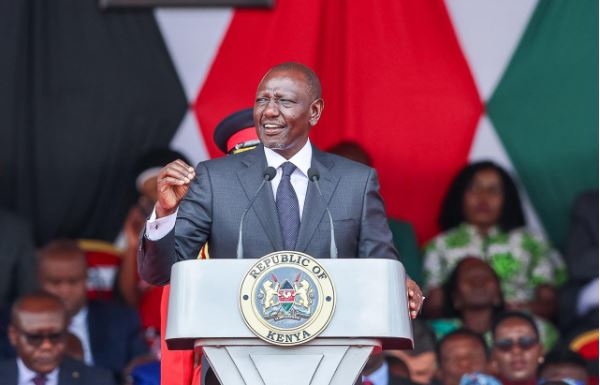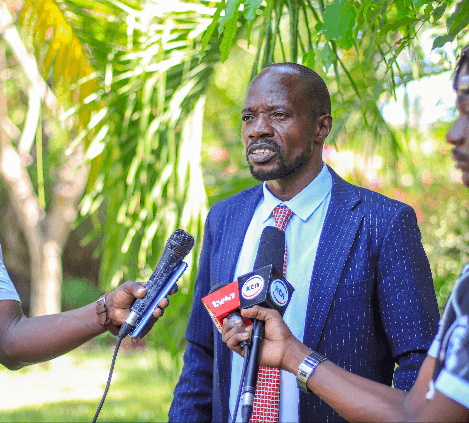Africa Climate Week was observed from August 29 to September 2. Stakeholders from various African states converged in Libreville, Gabon, to discuss climate challenges and opportunities, and propose ambitious solutions to tackle climate change.
The Week preceded the 27th United Nations Framework Convention on Climate Change Conference of the Parties, referred to as COP27, scheduled for November 6-18 in Sharm el-Sheikh, Egypt. UNFCCC is an international treaty bringing together 197 countries, including Kenya, to check the rise in global average temperatures and its impact on the climate system.
Over the past years, Africa has witnessed extreme weather events that have impacted lives and ecosystems. Scientists have warned that these adverse impacts of climate change will intensify with time.
The negative impacts of climate change include loss of biodiversity, severe droughts, water and food scarcity, stunted economic growth and, in extreme cases, loss of lives. Africa contributes about two to three per cent of the global greenhouse gas emissions. The continent and its people, however, remain highly vulnerable to climate change impacts.
For the longest time, efforts have centred more on addressing the causes of climate change through mitigation measures. Millions of rural communities in Africa depend on natural resources for livelihoods.
Intensified climate change effects across the continent have disproportionately compromised these livelihoods, making the communities more vulnerable to associated vagarities. This has necessitated an urgent focal shift towards climate change adaptation and resilience.
Adaptation implies adjusting ecological, social, or economic systems to respond to actual or expected climatic triggers and their effects or impacts. Resilience, on the other hand, alludes to anticipating, preparing and responding to climate-related events, trends or disturbances.
To enhance climate resilience, one needs to make an assessment of how climate change will create new climate-related risks or alter existing ones and then take steps to better manage these risks.
Both adaptation and resilience seek to strengthen the abilities of communities and ecosystems to cope with the adverse effects of climate change. Unfortunately, Africa's ability to adapt and build climate change resilience is largely dependent on the availability of financial resources.
Kenya, for instance, has prioritised adaptation measures in its commitments to address climate change. However, the latest reports show about 79 per cent of climate financing is for climate mitigation measures. Only about 21 per cent is for adaptation. To meet its climate goals needs, Kenya has to strengthen resilience by proportionally increasing financing.
Climate change adaptation provides multiple benefits, including increased agricultural productivity, food security, and water storage capacity to survive the present impacts.
And while governments are obligated to safeguard communities and ecosystems from climate shocks, other organisations are stepping in to complement these efforts. Governments alone cannot address all aspects of climate change, hence the need for collaboration between various stakeholders.
In this regard, Nature Kenya is supporting local communities to adapt to the impacts of climate change through various initiatives. These include promoting climate-smart agriculture, forest and landscape restoration, diversification of livelihood activities and reducing emissions through energy-saving cook stoves.
These measures have seen an increase in agriculture productivity and farm incomes of local communities while strengthening resilience to climate change risks.
Climate-smart agriculture
Agriculture alone contributes about a third of global greenhouse gas emissions. At the same time, climate change impacts the agricultural sector through unpredictable weather patterns, reduced crop yield and increased pests and diseases.
Climate-smart agriculture entails managing crop production systems to address food insecurity and climate change. It is one of the livelihood interventions introduced in the Yala Delta.
Local farmers have undergone training in sustainable crop husbandry and are supplied with a range of climate-resilient vegetables and cereal seeds to boost productivity.
Communities have also been supported to establish tree nurseries for fodder and fruit trees for on-farm planting. Beekeeping, poultry, fish farming and eco-tourism are also being promoted as sustainable community livelihood options.
Forest and landscape restoration
Degraded forests and other landscapes reduce the earth's ability to contain greenhouse gas emissions, hence, accelerating climate change. Restoration of degraded landscapes is, therefore, key to enhancing carbon sequestration.
In the Tana River Delta, 10,000 ha (24,710.54 acres) of degraded landscapes are targeted for restoration through direct seeding, planting tree seedlings and grass for pasture.
To this end, local communities have collected nine tonnes of indigenous tree seeds for seeding in degraded forest areas. Pasture seed banks have also been established to seed degraded pasturelands. Restoration of degraded mangrove landscapes in the Delta is ongoing as well.
Other local solutions
Additionally, communities in the Tana River Delta are engaged in other nature-based enterprises: rice farming, fish farming, goat keeping, climate-smart agriculture, indigenous poultry farming, beekeeping, chilli farming and eco-tourism to supplement their livelihoods. These are some of the enterprises that are being promoted to enhance community climate resilience.
In forest adjacent areas, the uptake of energy-saving stoves at household and institutional levels is being fronted to help reduce over-dependency on forests for fuel wood needs.
More than 1,500 households in Taita hills, Arabuko-Sokoke, Dakatcha, Mt Kenya, Tana River Delta and Yala Swamp have benefited from this initiative. Institutional energy-saving stoves have also been installed in 30 public schools.
These stoves have helped to cut down household and institution carbon emissions, provided a safe and healthy cooking environment for communities and reduced reliance on forests for fuel wood.
Way forward
Local solutions tailored for site-specific needs offer the best climate change adaptation and resilience options. These solutions, if scaled up, can enhance rural communities' ability to cope with climate change effects. Substantial investment to strengthen capacity in climate adaptation and resilience is, therefore required to achieve this objective.
Executive director, Nature Kenya – the East Africa Natural History Society
“WATCH: The latest videos from the Star”














